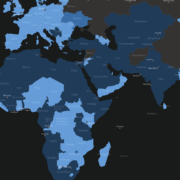The Reserve Bank of Zimbabwe Governor John Mangudya made an unappealing statement to assure Zimbabweans not to panic buy, neither should they worry about sliding back into 2008 status, alas he completely ignored to answer the most critical question.
While admittedly the bond note may have managed to stand firm against our speculated short gestation period, it seems the writing is now on the wall as fresh crisp bank notes begin to hit the black market in their huge batches.
The question that Zimbabweans want answered is who is fueling the black market with these crisp notes, filling up car trunks and equipping the forex traders with the much coveted paper.
Mangudya was recently on record stating that Zimbabwe will have $300 million more bond notes coming to add up to the initial $200 million.
Cash dealers in Harare who need to import cars and crucial inputs can not make bank transfers since the restrictive RBZ priority list, forcing these dealers to buy cash at a 50% premium from their bank accounts.
The rate is reported to be be now 90% amongst speculators as many hold on to their USD hard cash.
We still do not know how we managed to have an imbalance with the actual bank balance against the USD nostro value way before the bond notes introductions, suggesting that the RBZ printed electronic money.
However nothing has been publicly stated about the distribution of the new $300 million since hinting their coming and its now everyone’s guess on how the new currency is being used.
Initially the RBZ governor was confident that only the $200 million facility was sufficient to service the nation but this has proved otherwise as the central bank has requested more than 150% more of their initial plan.
Should authorities indeed start printing more bond notes without these notes being backed by foreign exchange, it would certainly add upward pressure to the domestic price environment.
This comes as Afreximbank president Benedict Orama recently said the institution would continue to help Zimbabwe — which to date has drawn down over $175 million from the facility to give incentives to exporters and help deal with its liquidity challenges.
In the wake of the severity of low liquidity — as Zimbabwe currently only has an estimated $300 million in cash circulating in the market — estimates indicate the country needs close to $1 billion in the economy to maintain adequate liquidity ratios.
Bond notes have been steadily vanishing from the local market on the back of currency dealers who are either hoarding them for speculative purposes or taking the surrogate currency into the black market.
Official estimates suggest that SMEs employ over 60 percent of Zimbabwe’s population, contributing around 50 percent of GDP, while these informal players are largely unbankable












Comments